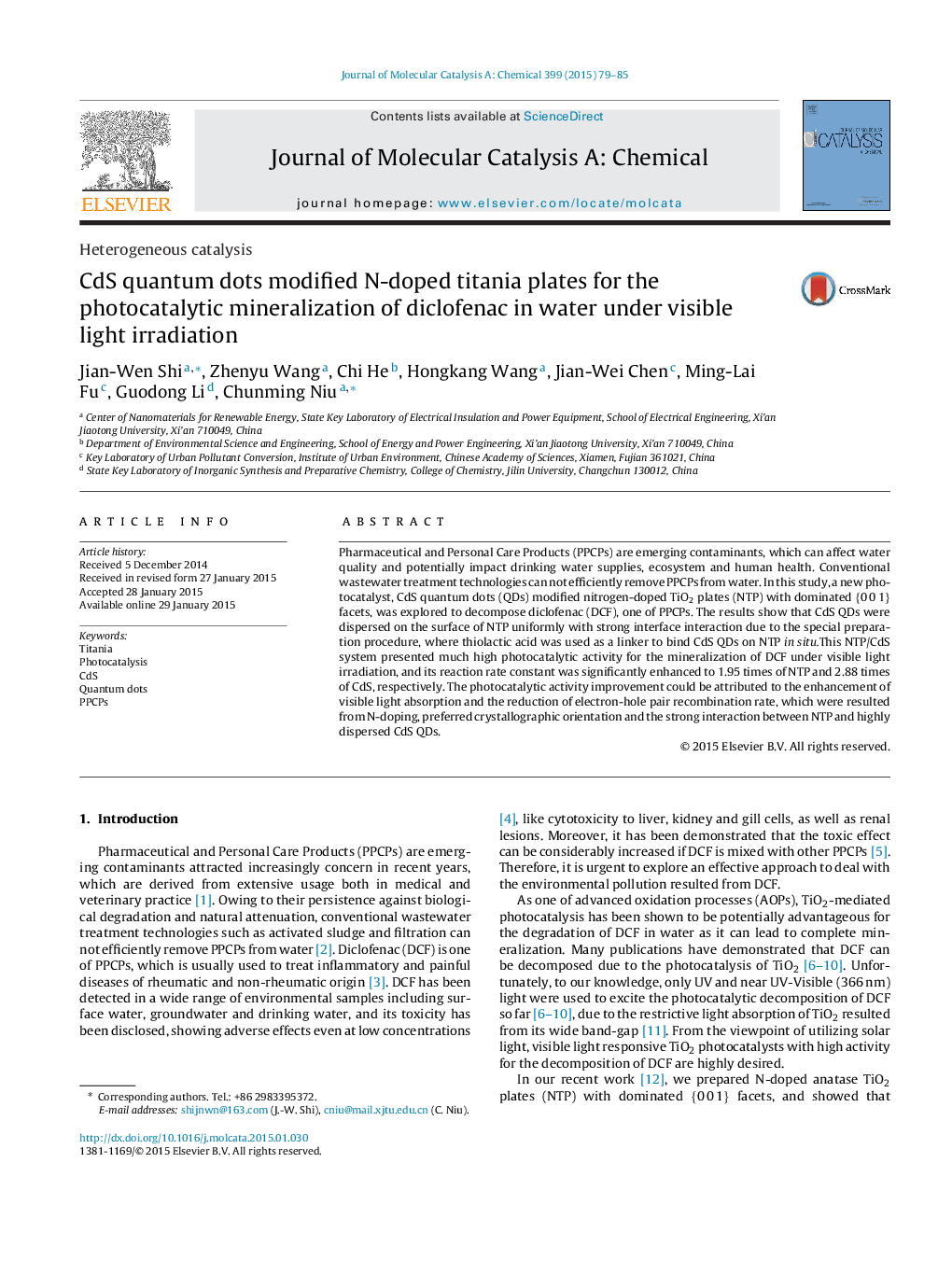| کد مقاله | کد نشریه | سال انتشار | مقاله انگلیسی | نسخه تمام متن |
|---|---|---|---|---|
| 65185 | 48385 | 2015 | 7 صفحه PDF | دانلود رایگان |

• N-doped TiO2 plates with dominant {0 0 1} facets were modified by CdS quantum dots.
• Thiolactic acid was used as a linker to bind CdS QDs on TiO2 plates insitu.
• CdS QDs highly dispersed on TiO2 plates with strongly intimate interaction.
• NTP/CdS showed high visible-light catalytic activity for the mineralization of DCF.
• Activity improvement was attributed to the reduction of charges recombination.
Pharmaceutical and Personal Care Products (PPCPs) are emerging contaminants, which can affect water quality and potentially impact drinking water supplies, ecosystem and human health. Conventional wastewater treatment technologies can not efficiently remove PPCPs from water. In this study, a new photocatalyst, CdS quantum dots (QDs) modified nitrogen-doped TiO2 plates (NTP) with dominated {0 0 1} facets, was explored to decompose diclofenac (DCF), one of PPCPs. The results show that CdS QDs were dispersed on the surface of NTP uniformly with strong interface interaction due to the special preparation procedure, where thiolactic acid was used as a linker to bind CdS QDs on NTP in situ.This NTP/CdS system presented much high photocatalytic activity for the mineralization of DCF under visible light irradiation, and its reaction rate constant was significantly enhanced to 1.95 times of NTP and 2.88 times of CdS, respectively. The photocatalytic activity improvement could be attributed to the enhancement of visible light absorption and the reduction of electron-hole pair recombination rate, which were resulted from N-doping, preferred crystallographic orientation and the strong interaction between NTP and highly dispersed CdS QDs.
Figure optionsDownload high-quality image (121 K)Download as PowerPoint slide
Journal: Journal of Molecular Catalysis A: Chemical - Volume 399, April 2015, Pages 79–85